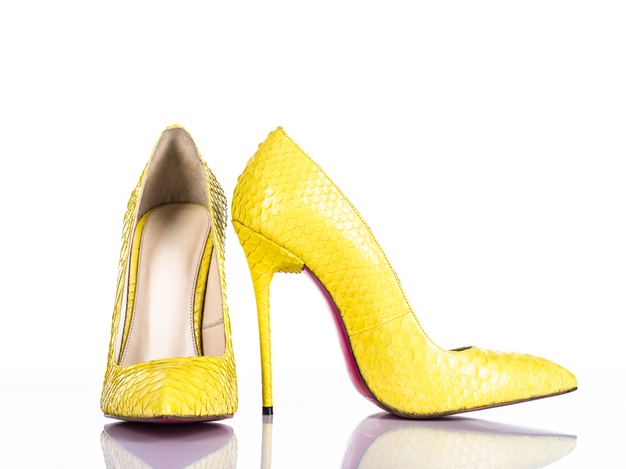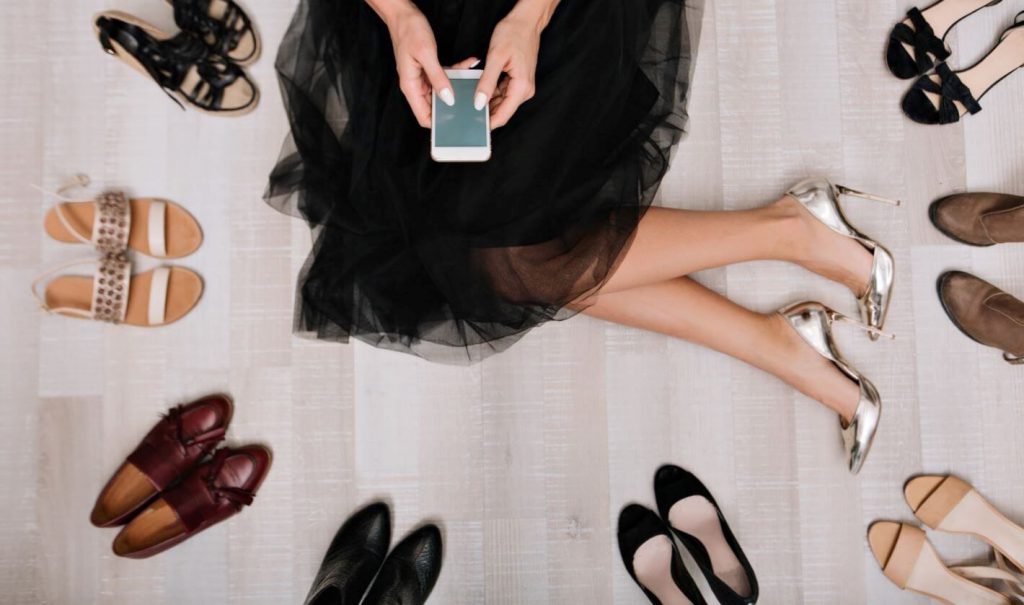Do you know what type of shoes you have?
Generally speaking, there is no real dress code for women’s shoes as for men’s elegance, so we rely on taste, the dictates of footwear fashion, the woman’s personality and common sense. For example, if you love very high heels, but cannot walk on them in a natural and graceful way, it is better to choose a lower shoe model, so as not to fall into ridicule as well as… to the ground.
There are so many female shoe models, with high, low, medium heels, purely feminine, masculine, trendy models, so it is good to clarify terms that identify the various types of footwear and the main characteristics of the same.
Let’s start with the most feminine shoes of all the most loved and worn, declined in all colors and in all materials from simple canvas to crocodile: the decolté.
Decolté
They are called in many ways: decoltè, décolletées, décolleté, the English call them woman’s court-shoes and the Americans pumps, a name that in Italy indicates above all the very high heels with plateau, and they are the feminine shoes par excellence for day and evening true must have for every woman’s wardrobe.
With heels, of course, otherwise they would be ballet flats, with or without the plateau, shaped toe, without laces, fastenings or straps, they have the main characteristic of leaving the neck and the back of the foot uncovered, by a neckline that can be round, U-shaped or at heart.
The trim on the shoe, whatever the model, is called peep toe or open toe and provides well-groomed and fresh enamel nails.
- Peep toe: The shoe features a spike that allows only the tip of the big toe to be seen.
- Open toe: The shoe has a front opening by exposing the toes.
The open toe cleavage can be worn with stockings, as long as they are sheer and without seams at the toe (and without a reinforced toe)
The pumps adapt to all types of out-fit skirts, trousers, jeans, office, day or evening wear. The level of elegance is given by the materials, decorations and accessories of the shoe.
For work, the cleavage is perfect but, unless you work in the entertainment or fashion, the heel should not exceed 6 cm, because the higher are unprofessional. Open toe models should also be avoided for the same reason.The healthiest are heels around 4 cm, which do not strain the back and foot too much, as would a pair of ballet flats or higher-heeled shoes.
Not surprisingly, the cleavage kitten, ie with kitten heels, are also called office shoes, that is, office shoes; very bon tonand with a discreet charm they are often worn also by professionals, managers, women of power, forced from work to stand many hours and away from home, wearing formal clothes and suits. With office shoes they avoid back and foot strain, maintaining high standards of elegance and formality. Also perfect in the Chanel version.

Type “Chanel” or Sling back shoes(Sandal decolleté)
The “Chanel” type shoes, also known as sandal shoes or sling-back shoes, are shoes similar to the cleavage, but which leave the heel uncovered, with a strap that passes just above it, encircling the lower part of the ankle at the back. They are very elegant and can have heels of all heights and all shapes, there are also flats, that is ballerina, as well as they can be closed toe or blunt.
They are called Chanel because it was Coco Chanel herself in 1957, who conceived and launched this model with the back of the foot uncovered, originally bi-colored, that is ecru and black. The beige to lengthen the leg and the black tip to shorten the foot, making the signs of wear less evident, while the back strap and the 5cm wide heel gave freedom of movement and comfort.
Ballerinas or Daisy Ducks
The Dancers or Paperine (English flat shoes or simply flats) inspired by the ballet shoes are an evolution of dance shoes and the first to produce them were own specialized shoe factories in this area, starting from Jacob Bloch, Latvian-born shoemaker, who in the 1930s produced innovative dance shoes, passing through Repetto (Rosa Repetto was the mother of the great dancer Roland Petit and began producing ballet shoes for her son in a small workshop near the Opera National in Paris in 1947) and Capezio.
They became truly popular in the 1950s, launched by divas such as the icon of style and understated elegance, Audrey Hepburn, who relied on Salvatore Ferragamo, and Brigitte Bardot who ordered bespoke walking ballet flats from Repetto.
Ballerinas are casual shoes with a thin sole, minimal heel, practically non-existent, very low-cut on the upper part of the foot and, in the most classic version, they have a small satin rat tail bow on the front edge. The tip is round, although more pointed or blunt versions are found.

However, there are many versions of ballet flats, elegant, casual, sporty, for home etc. produced in the most varied materials, (there are also types made entirely of silicone, the Jelly), of all possible colors and with different decorations: bows of all types, fabrics and sizes or tassels, laces, rhinestones etc.
Although very comfortable, usually soft and with a wide plant, if you are no longer a girl, they are to be reserved for moments of relaxation and when our extremities are really very tired, also because the dancers can be comfortably slipped into the bag for a quick and appropriate change of shoes (gliding into a duck after a day on heels is a priceless relief).
The dancers are to be avoided also and above all, because the low heel is deleterious both for the posture (they are not called duckies at random). For the posture and if used often, can lead to lumbar pain, knee problems and to the hips, heels etc.

A trend analyst who specializes in footwear. She writes about fashion trends, styling advice, and the growing demand for iconic sneaker brands.




